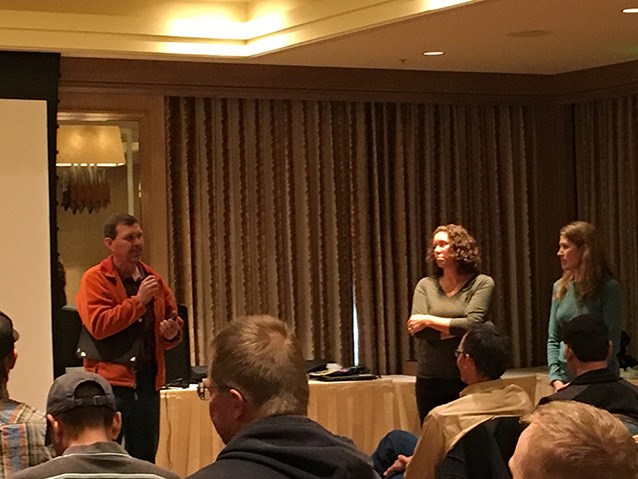Last updated: December 14, 2017
Article
Big Bend National Park Fresno Fire Honored as Southwest Fire Science Incident of the Year

NPS photo
The award recognized Richie Sinkovitz, Big Bend National Park Engine Captain, who served as Incident Commander for the fire, as well as interdisciplinary park staff for their contributions.
The award recognized Richie Sinkovitz, Big Bend National Park Engine Captain, who served as Incident Commander for the fire, as well as interdisciplinary park staff for their contributions.

NPS photo

NPS photo
Based on safety and ecological reasons, fire managers determined the best course of action was to monitor the Fresno Fire while at the same time also ordering resources in case the fire moved in a direction in which suppression action would be needed. Their decisions were based on science, objectives identified in the park’s fire management plan, including restoration of a historically overgrazed arid grassland, and an analysis of the current situation.
Incorporating Science in Decision Making
Big Bend National Park has vegetation plots that go back to early 1950s, documenting the recovery of the parks sotol-grasslands from heavy livestock grazing. Additionally, in the early 2000s, the park conducted fire history research in the Chisos Mountains documenting the fire history of its forest and woodlands, which identified a negative correlation between livestock grazing and fire frequency.
Because the sotol-grasslands skirt completely around the Chisos Mountains it is reasonable to assume that historically fires that started in the sotol-grasslands could ascend into the Chisos, thus linking the fire regime of the two ecosystems. Thus an increasing occurrence of fire in the sotol-grassland is an indicator of native grass recovery grass. Eventually a return of recurring fire to the woodlands and forest of the Chisos Mountains will help restore the natural fire regime to the entire landscape.
Interdisciplinary Cooperation
Pre-planning and collaboration among park fire and resource staff played an important role in enabling the park to manage the 273 acre lightning-ignited Fresno Fire for resource objectives. The park’s fire ecologist, botanist, archeologist, hydrologist, wildlife biologist, GIS specialist and representatives from the ranger discussed potential concerns and helped determine that there were no resource management concerns associated with the Fresno Fire. All agreed that the proposed action of allowing the fire to burn was the best.
Big Bend National Park has vegetation plots that go back to early 1950s, documenting the recovery of the parks sotol-grasslands from heavy livestock grazing. Additionally, in the early 2000s, the park conducted fire history research in the Chisos Mountains documenting the fire history of its forest and woodlands, which identified a negative correlation between livestock grazing and fire frequency.
Because the sotol-grasslands skirt completely around the Chisos Mountains it is reasonable to assume that historically fires that started in the sotol-grasslands could ascend into the Chisos, thus linking the fire regime of the two ecosystems. Thus an increasing occurrence of fire in the sotol-grassland is an indicator of native grass recovery grass. Eventually a return of recurring fire to the woodlands and forest of the Chisos Mountains will help restore the natural fire regime to the entire landscape.
Interdisciplinary Cooperation
Pre-planning and collaboration among park fire and resource staff played an important role in enabling the park to manage the 273 acre lightning-ignited Fresno Fire for resource objectives. The park’s fire ecologist, botanist, archeologist, hydrologist, wildlife biologist, GIS specialist and representatives from the ranger discussed potential concerns and helped determine that there were no resource management concerns associated with the Fresno Fire. All agreed that the proposed action of allowing the fire to burn was the best.
